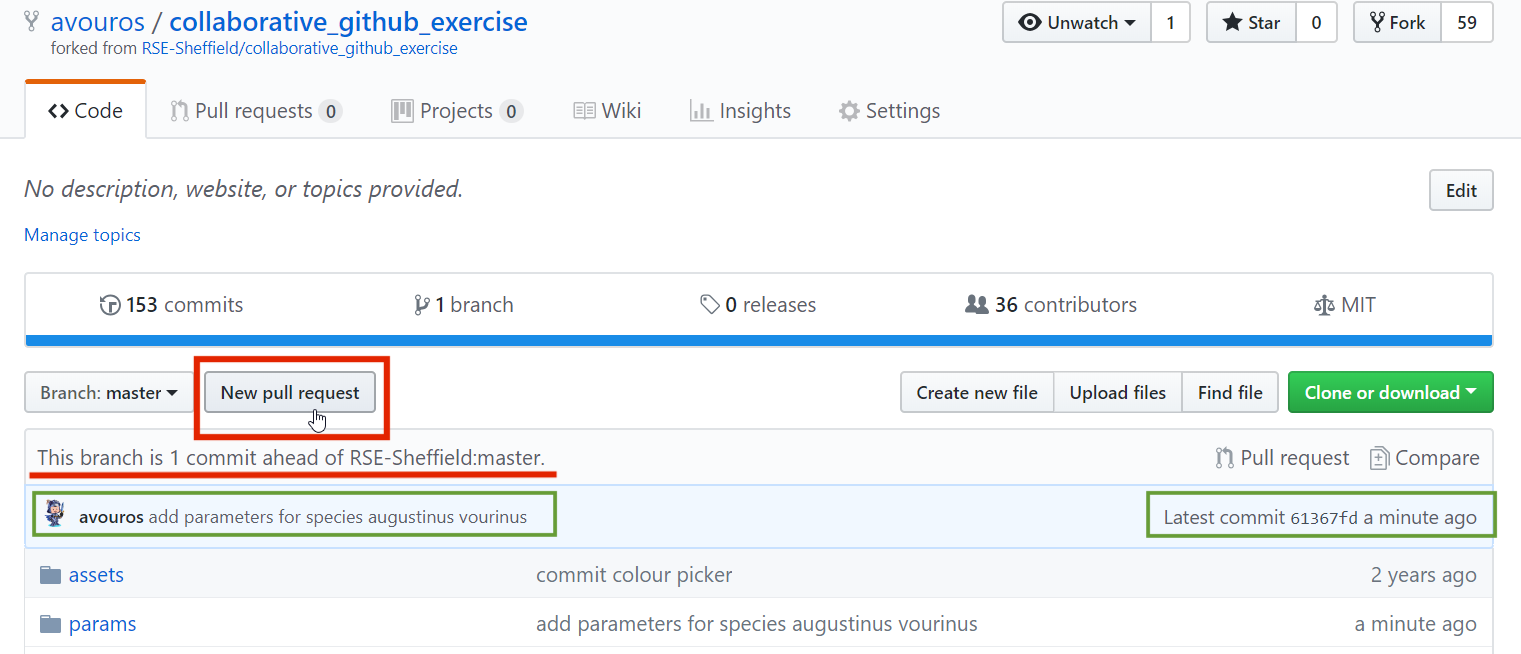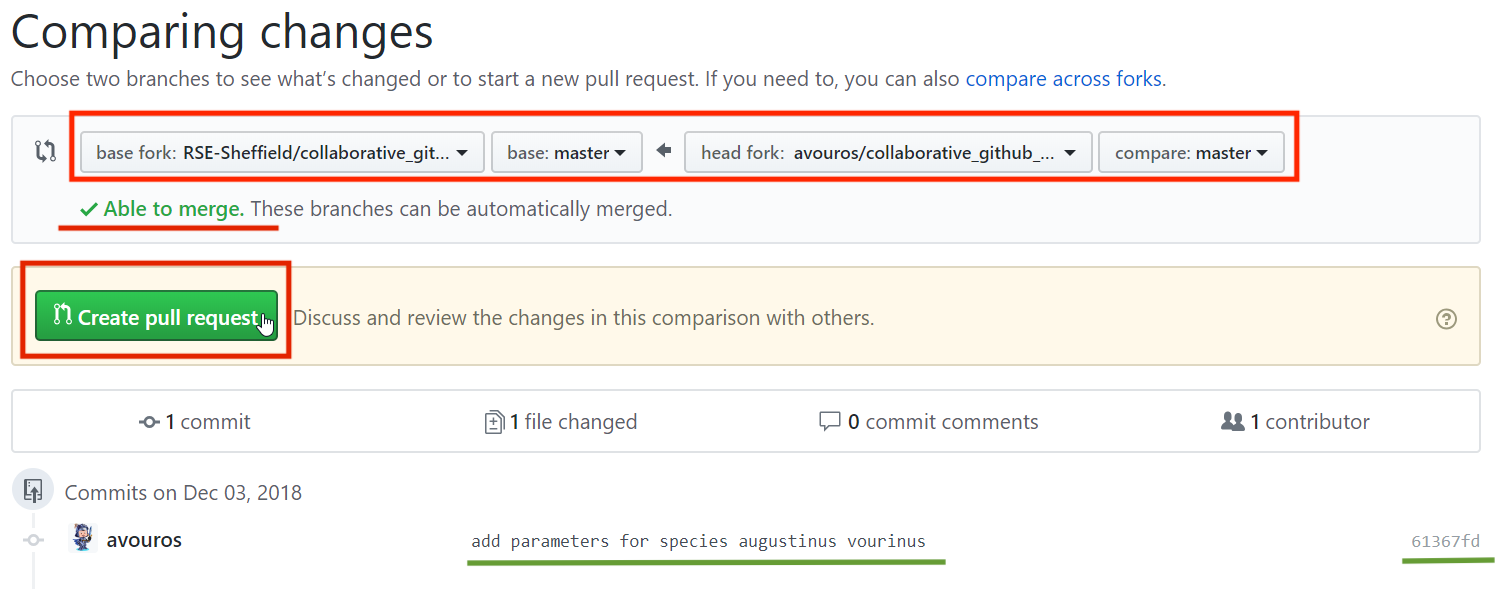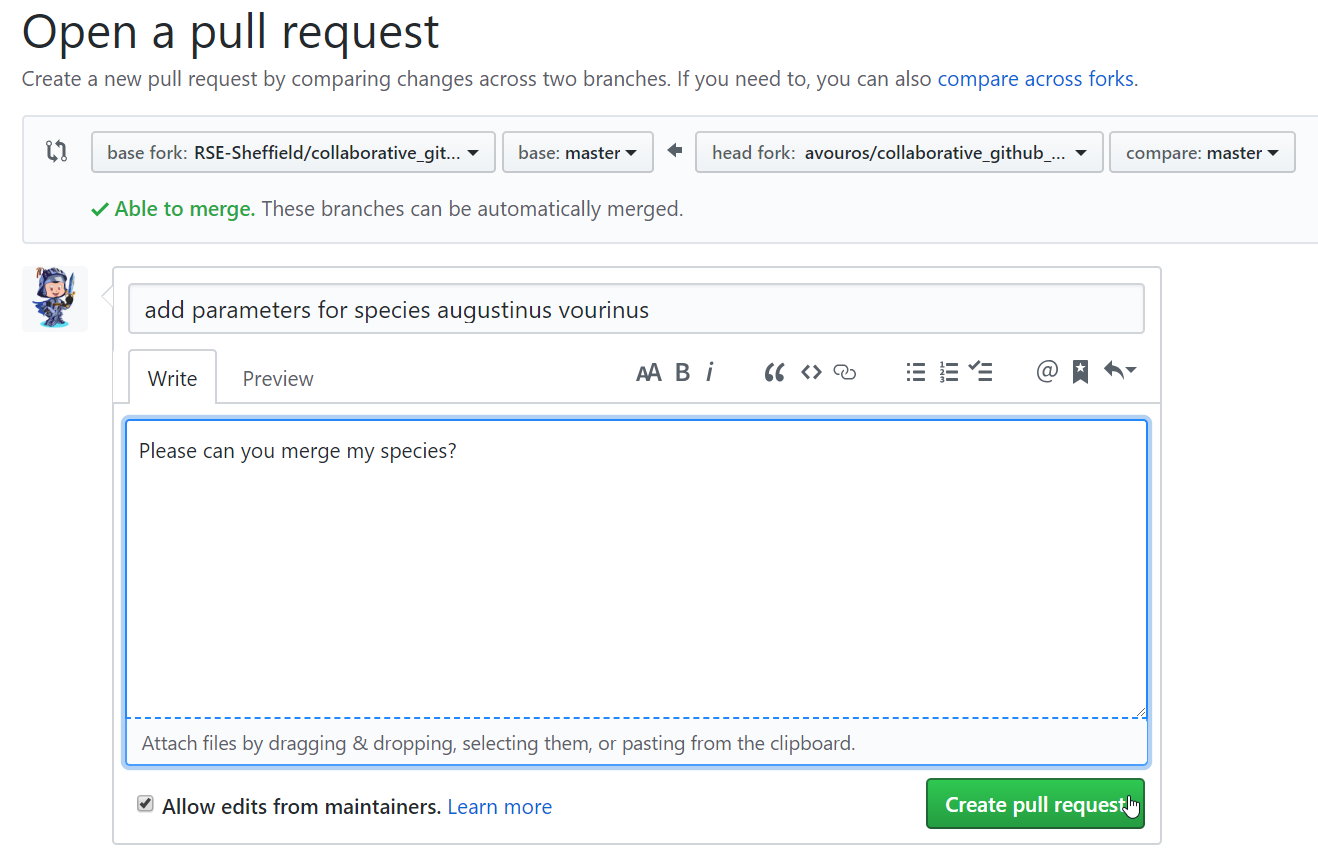Making a Pull Request
Make a pull request to the upstream repository
Tha changes you made locally have now been committed and pushed to your fork on GitHub. If you go to GitHub, you’ll now be able to see the details of the last commit. However, we want to collect all participants’ files in the upstream repository ie RSE-Sheffield/collaborative_github_exercise. So the next step is to make a pull request from your fork to the upstream repository.
Initiate a new pull request
GitHub is already flagging the fact that your fork is ahead of the master branch in the upstream repository and a button to make a new pull request with your changes is visible above that flag.
To initiate a pull request (PR) just click that Pull Request button.
Check that changes can be merged
Once a PR is initiated, GitHub automatically compares your version of the code to that in the upstream repository and checks whether your changes can be merged automatically, ie that they do not create any merge conflicts.
If everything has gone well, GitHub should advise that you are able to merge your changes. To continue, click on the Create pull request button.
Create pull request
You are finally ready to send the pull request to the upstream repo. The pull request not only shows the changes you made but also initiates a comment thread in which you can communicate with the upstream repository owners.
At this stage, you have the opportunity to give a bit more detail about the changes you have made. Be polite and friendly and be as descriptive as possible! Remember, there are actual humans at the other end of the PR that need to understand what changes you have made, why and be convinced that your changes are worth merging in to the code base.


